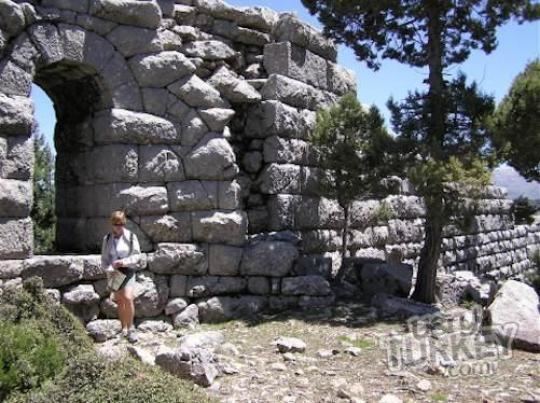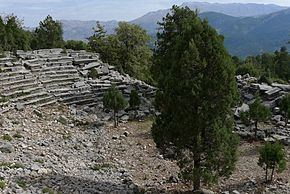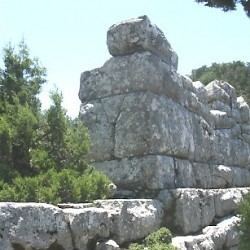Alternate name Oinoanda Associated with Diogenes | Type Settlement Region Lycia | |
 | ||
Location İncealiler, Muğla Province, Turkey | ||
Muros de oenoanda ric meireles de andrade
Oenoanda or Oinoanda (Greek: τὰ Οἰνόανδα) was an ancient Greek city in Lycia, in the upper valley of the River Xanthus. It is noted for the philosophical inscription by the Epicurean, Diogenes of Oenoanda. The ruins of the city lie west of the modern village İncealiler in the Fethiye district of Muğla Province, Turkey, which partly overlies the ancient site.
Contents

History

The early history of the settlement is obscure, in spite of an exploratory survey carried out, with permission of the Turkish authorities, by the British Institute at Ankara (BIAA) in 1974–76. It seems that Oinoanda became a colony of Termessos about 200-190 BC and was also called Termessos Minor (or Termessos i pros Oinoanda). Oenoanda was the most southerly of the Kibyran Tetrapoleis in the Hellenistic Period, which was dissolved by L. Licinius Murena in 84 BCE, whereupon Oenoanda became part of the koinon of Lycia, as its inscriptions abundantly demonstrate.

Diogenes carved a summary of the philosophy of Epicurus onto a portico wall, which originally extended about 80 meters. The inscription sets out Epicurus' teachings on physics, epistemology, and ethics. It was originally about 25,000 words long and filled 260 square meters of wall space. The inscription has been assigned on epigraphic grounds to the Hadrianic period, 117–138 CE. The stoa was dismantled in the second half of the third century CE to make room for a defensive wall; previously the site had been undefended.

The site was first noted by Hoskyns and Forbes, in 1841, and published in the Journal of the Royal Geographical Society, xii (1843). The extensive philosophical inscriptions of Diogenes of Oenoanda were identified later from scattered fragments, apparently from the stoa. It cannot be assumed that Diogenes erected himself. Evidence for an ancient Roman Bridge at Oinoanda has surfaced in the 1990s. By 2012 over 300 fragments of Diogenes' stoa had been identified, varying in size from a few letters to passages of several sentences covering more than one block. New archaeological work is being conducted at the site by the Deutsches Archäologisches Institut.
Oenoanda is a titular see of the Roman Catholic Church.

